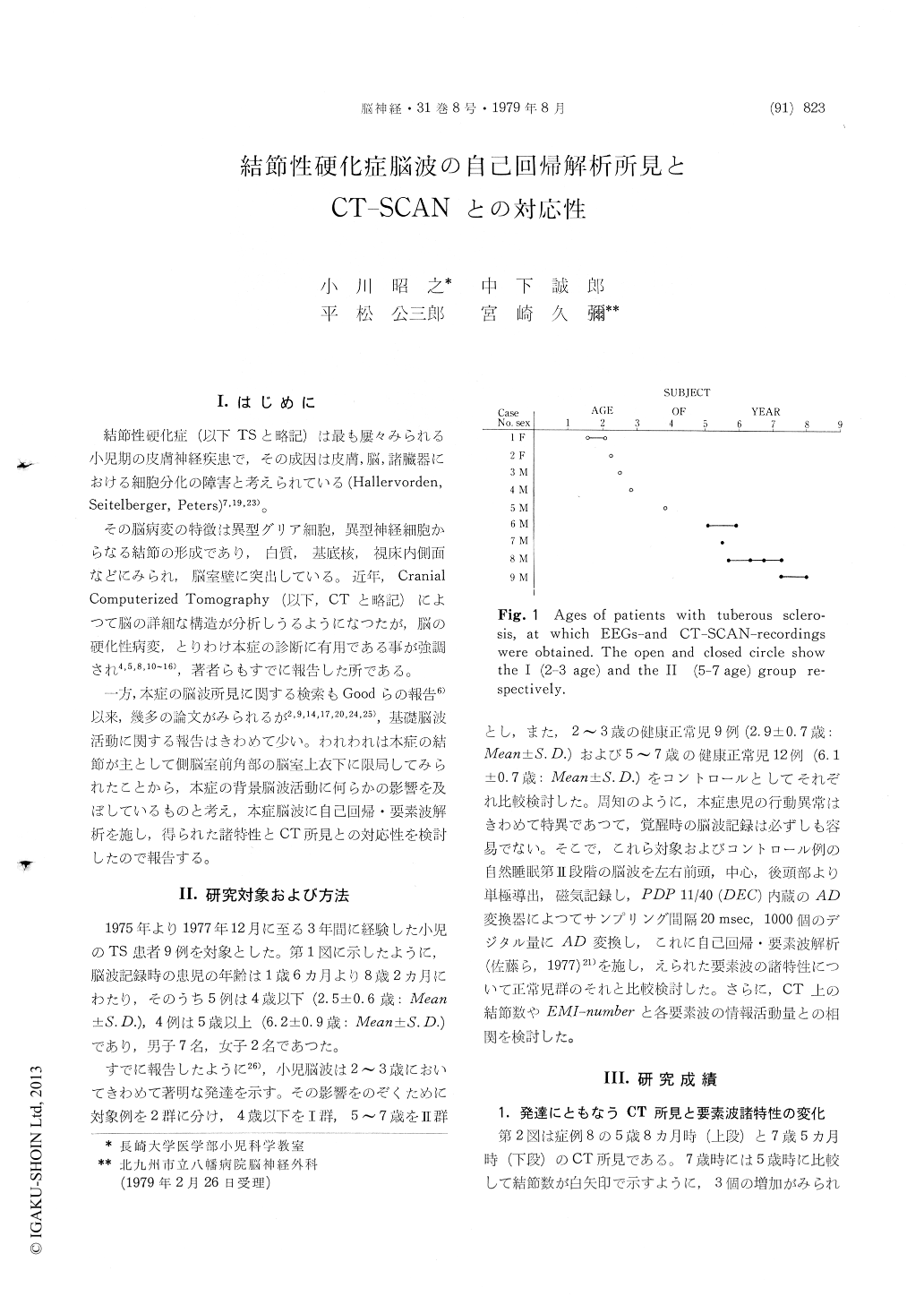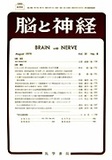Japanese
English
- 有料閲覧
- Abstract 文献概要
- 1ページ目 Look Inside
I.はじめに
結節性硬化症(以下TSと略記)は最も屡々みられる小児期の皮膚神経疾患で,その成因は皮膚,脳,諸臓器における細胞分化の障害と考えられている(Hallervorden,Seitelberger, Peters)7,19,23)。
その脳病変の特徴は異型グリア細胞,異型神経細胞からなる結節の形成であり,白質,基底核,視床内側面などにみられ,脳室壁に突出している。近年,CranialComputerized Tolnography (以下,CTと略記)によつて脳の詳細な構造が分析しうるようになつたが,脳の硬化性病変,とりわけ本症の診断に有用である事が強調され4,5,8,10〜16),著者らもすでに報告した所である。
The autoregressive power spectrum and their component analyses of 36 electroencephalograms of 9 patients with tuberous sclerosis and 21 healthy children were studied. The data were recorded on the analog tapes, and the 20 second artifact free segment of records was digitized at 50 samples/sec. The autoregressive power spectrum and their component were calculated by the methods of Sato (1976) with the minicomputer PDP 11/40.
The component consisted of the first and the second order elementary processes. The former showed a transient nonoscillatory delta wave, whereas the latter showed damped oscillatory waves of delta, theta, alpha and beta rhythms in the EEG. The characteristics of these component rhythms in the EEG were given by the frequency, the time constant of the nonoscillatory delta, the damping time of the oscillatory component waves (time constant of the envelope of the damped oscillation), the mutual information amounts, etc. Thus, the correlation between these characteristics of com-ponent and CT-scan in tuberous sclerosis were examined. The results were as follows :
1. Compared with the characteristics of EEG in normal children, the mutual information amount, the damping time and/or time constant showedsignificantly lower value in alpha rhythms of frontal-, central-regions and in theta, delta rhythms of occipital region in the patient with tuberous sclerosis.
2. Multiple subependymal high density areas were found in all of these patients on CT. EMI-number of these high density areas were less than that of calcification in younger children below the age of 3 years, but in older children were equivalent to that of calcification.
3. The correlation between the number of sub-ependymal nodule on CT and the mutual infor-mation amount in the EEG showed significantly the negative coefficient in theta, delta rhythms of 01 region in older age group of patients.
4. The correlation between EMI-number of these subependymal high density areas and the mutual information amount in the EEG showed signifi-cantly the negative coefficient in theta & delta rhythms of 01 region in all cases of patients.
5. It is considered that the multiple sub-ependymal nodules may influence the background activities of the central and the occipital regions in the EEG of tuberous sclerosis.

Copyright © 1979, Igaku-Shoin Ltd. All rights reserved.


